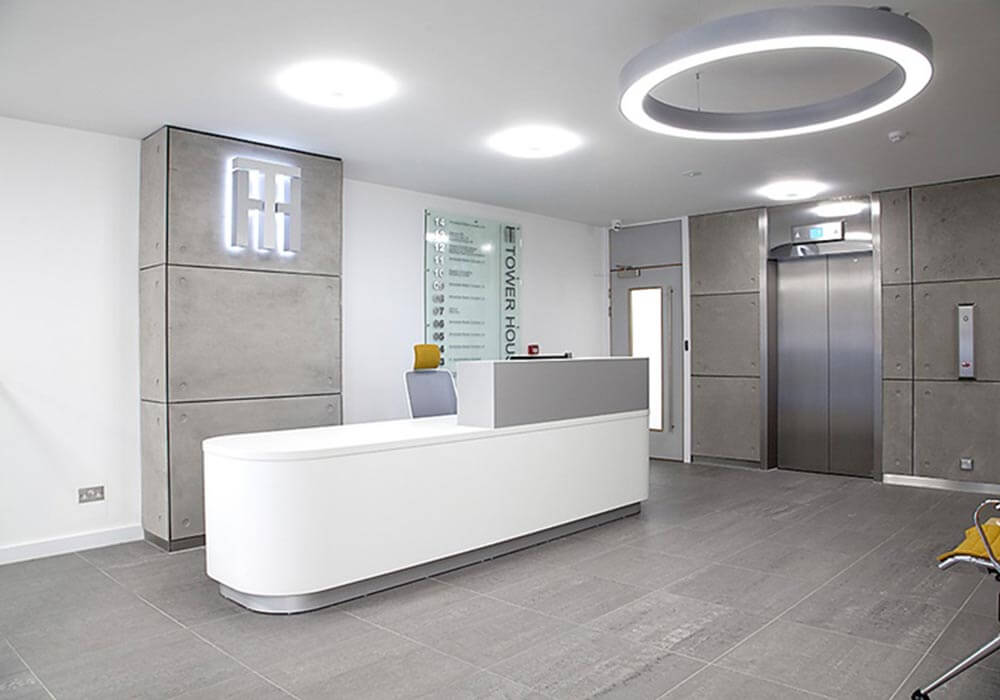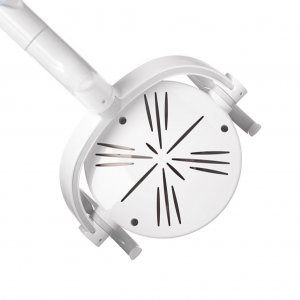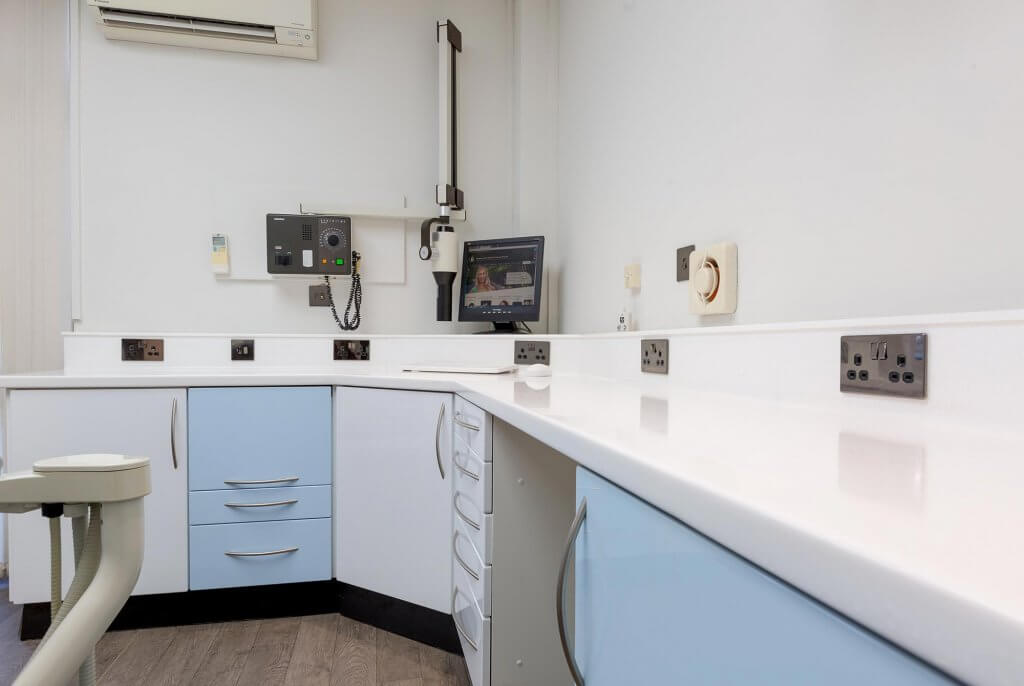When it comes to a dental practice design, lighting is vital. We're going to take look at why it is important to have the right kind of lighting in a dental practice as there are various kinds of sources of light used, each with different purposes and characteristics.
Light has two functions in a surgery, ambient lighting and task lighting. The best task lighting should be powerful enough to ensure work precision is possible, particularly when it comes to things involving colour matching for cosmetic work and restorations but it should also improve energy levels and reduce eye strain.
Patient Experience
Ambient lighting is used to establish a comfortable environment in a way that helps the patients feel confident and calm and helps to reduce their nervousness. There are many ways this can be achieved.
 Down lighting on cabinets can produce a very pleasing and modern ambience, while wall lights can help to make to make the area feel more airy and open.
Down lighting on cabinets can produce a very pleasing and modern ambience, while wall lights can help to make to make the area feel more airy and open.
If you're lucky enough to have a surgery with great views and nice large windows (such as the Harley Dentist in London), the chairs can be installed to face them, providing the patient with a more enjoyable experience and allowing more natural light to shine in whilst you work,
Mixing Ambient and Task Lighting
As a general rule of thumb, the ratio should be 1:5 when organizing ambient and task lighting with regards to their strength.
Around the patient’s mouth, for example, the lighting should have an intensity of approximately 20,000 Lux, so it follows that the surrounding area should have a lesser, ambient light intensity of 4,000 Lux.
 Window Lighting
Window Lighting
Artificial lighting in a dental surgery will always be required, no matter how much external lighting comes from the windows. When wintertime hits, lighting may be non-existent for some appointments and you need to ensure the light levels are always optimal for work.
Whilst natural light can obviously improve shade matching, productivity, and patient comfort, unfortunately, natural light is simply too unstable to rely on for a precision work environment.
However, North-facing windows are best for natural light sources as morning sunlight is often too bright when coming from the east. A southern positioning though is very good during winter, while natural lighting from a western direction is nearly always unreliable.
Lighting quality in a dental surgery can be assessed using the following pointers:
- Lighting needs to be free from shadows, uniform and clean
- You should be able to match shades and colours easily, the same as when only using natural light
- Headaches or tired eyes should not be an issue either during the day or at the end of the day
- Sunlight can discolour cabinetry, so it is important to have blinds in window areas to subdue the natural sunlight at times of the day when it is very strong.
Ceiling Lights
Ideal choices for ceiling lights are ones that do not strain the eyes and that have a well-proportioned and balanced light emission. Some of the higher end options can help to improve the overall customer experience so be sure to consider your options and buying basic dental practice lighting
 Operating Lights
Operating Lights
Operating lights are the main lights illuminating your working area and are therefore very important. Most operating lights would now be LED. The type of operating lights used will depend on the layout of the surgery and where the chair is placed. While some have lights attached to the delivery unit, others are ceiling or wall mounted.
They should have autoclavable and removable handles to control infection, an adjustable intensity and a colour temperature of around 4000 to 6000 K.
Lighting in Other Areas of the Practice
The decontamination or LDU room is another area of the practice that needs optimum lighting. While there’s no particular rules or regulations about lighting this space, it’s best to be as pragmatic as possible as there are strict regulations with regards to the controlling of infections, so having a clear view of the working area is needed.
 While daylight can be used to assist, powerful LED light tubes or fluorescent lighting is required. Reflectivity and worktop/cabinet colours can also make a difference so be sure to bear it in mind.
While daylight can be used to assist, powerful LED light tubes or fluorescent lighting is required. Reflectivity and worktop/cabinet colours can also make a difference so be sure to bear it in mind.
Waiting areas and receptions need to be relaxing, welcoming and warm, so low colour temperatures are ideal. General lighting should have an intensity of around 200 to 700 lux, while down lighting and recessed lights can be used to give the space a luxurious and modern look and feel.
It’s recommended that you use a lighting layout that offers smooth distribution of light and where possible a gradient of light increasing in strength from the waiting room to surgery, so the patient’s eyes can adjust gradually.
Summary
To summarise, lighting in a dental practice can be difficult to get right and you'd be surprised how much difference the small details can make.
If you're a dental surgery owner and are looking for a professional dental fit out company to assess your situation, give the team at Global Dental a call today and schedule an appointment.


 WhatsApp Support:
WhatsApp Support: